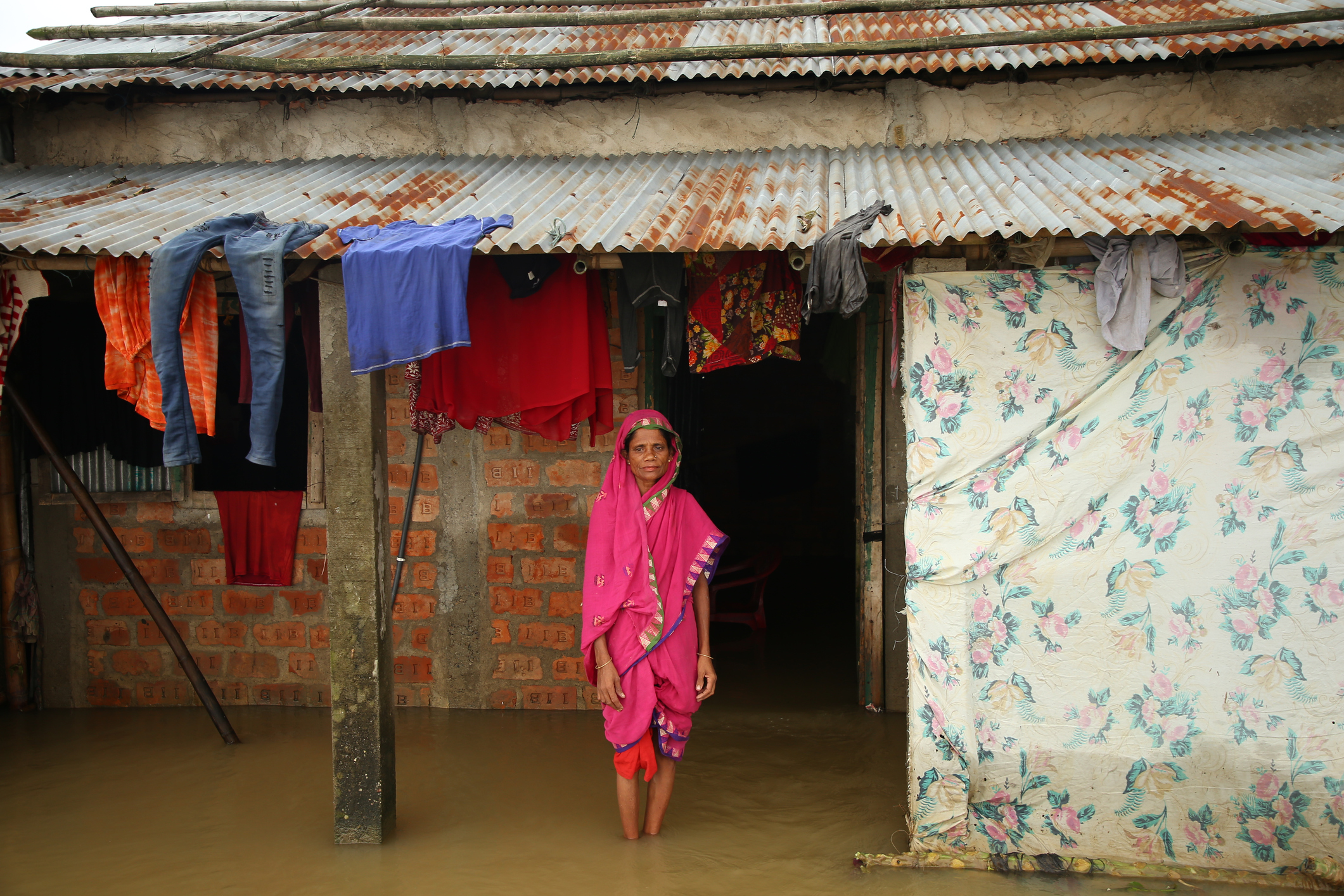Fisherfolk increasingly grapple with the effects of climate change on their homes and livelihoods. Research suggests that channeling climate finance towards poverty-fighting cash transfers could help solve this problem for the approximately 30 million fishers and their families in the Global South.
Small-scale fishers often live day-to-day. During our latest round of fieldwork in the Philippines in April this year, my team and I talked to more than 100 fishers in Iloilo Province. One day we interviewed a fisher who had just returned from a 6 a.m. to 11 a.m. fishing trip. He had caught 2.5 kg of fish worth 400 Philippine Peso (PhP); that’s USD 8. He had spent 80 PhP on fuel, so had 320 PhP left. “2.5 kg is not bad, but food prices have risen a lot. One kilo of rice now costs 100 PhP. I save very little”, this fisher said. There are days when he catches less, or even nothing, when the weather is bad and the waves too dangerous. This fisher and many others in the Philippines and beyond belong to the poorest sections of society.
Compounding the long-standing challenges of poverty and overfishing for fisherfolk is climate change. Coastal communities feel a strong sense of belonging and prefer to live on the shoreline rather than in social housing or in a slum in the big city. As a result, they bear the brunt of climate change impacts, such as typhoons, soil salinization and erosion. What’s more, higher ocean temperatures make fish go deeper into the sea making them harder to catch, and aquaculture more susceptible to diseases. “If global warming reaches +2°C by 2050, the annual losses in gross revenue of the global fisheries sector are projected to reach between USD 17 to 41 billion”, according to a climate risk management analysis.
Conditional cash transfers for poverty alleviation
In the Global South, millions of fishing-based households are financially vulnerable. Many face a lack of alternatives to fishing, and do not own enough land or possess enough skills to find better-paying jobs.
To ease the plight of impoverished communities, many countries have established conditional cash transfer (CCT) programs. These give cash to families if they meet certain conditions, for example, if they send their children to school or attend regular medical check-ups. The programs are based on the premise that, over time, children will be healthier, better educated, and better prepared to navigate the job market.
Are CCTs effective? In a review on climate resilience and cash transfers, Arun Agrawal and co-authors conclude that more research is needed as to how cash transfers could enhance ‘transformative resilience’, that is: “…the ability of systems to fundamentally alter structure and adopt new response strategies to enable recovery from shocks that exceed past vulnerability thresholds.”
And while the COVID-19 pandemic and climate shocks have led to a rise in unconditional cash transfers, less is known about the precise effectiveness of CCTs.
Connecting climate finance to conditional cash transfer (CCT) programs
Although uncertainties remain regarding CCTs’ effectiveness, connecting climate finance to CCTs might open new ways forward – and, importantly, provide new insights on their impacts. Evidence from Central America and Ethiopia show that conditional cash transfers can reduce climate-related risks. By combining national and international resources, CCTs could be more effective and impactful. With respect to combating deforestation, The Center for International Forestry Research wrote in a 2014 policy brief that “Packaging REDD+ with CCT and other social protection measures may be an alternative to diluting the REDD+ agenda and could leverage administrative synergies across cash transfer programs.”
As with rural communities and forests, it is important to consider how CCT could support fishing communities and coastal areas. The payments could help these communities by enabling various adaptation and mitigation strategies, as listed in the table below. These include ‘grey green solutions’ which combine ‘grey’ engineering-based and ‘green’ natural capital approaches. As environmental researcher Thong Anh Tran explains: “While grey solutions such as dykes and reservoirs remain essential to retaining water on a large scale, the non-dyke areas of the delta and wetland systems may be surprisingly effective in absorbing and storing large amounts of floodwater during the flood season.”

Difficult access to fresh water during the dry season
Innovative CCTs could include a ’menu’ of conditions for recipients to fulfill, depending on the most pressing climate change challenges. Several steps are then necessary to start a CCT + climate finance project area:
- At the national level, which part of climate finance funds can be allocated to complement existing CCT policies or to fund new CCT initiatives need to be determined.
- At the coastal/municipal level, village heads and other leaders need to identify the most pressing needs to address climate change impacts.
- Potential beneficiaries can select one or two options from this menu and promise to work on them in return for cash payments. These can range from relatively small projects, like elders teaching climate change awareness, to larger projects, such as installing tidal energy or a new rainwater harvesting facility. Effectively, the menu is a blend of light conditions attached to the cash transfer and stronger conditions equivalent to cash for work and payment for ecosystems options. All activities will increase local, coastal incomes, reduce the dependence on unsustainable fishing practices, while also contributing to climate change adaptation and mitigation.
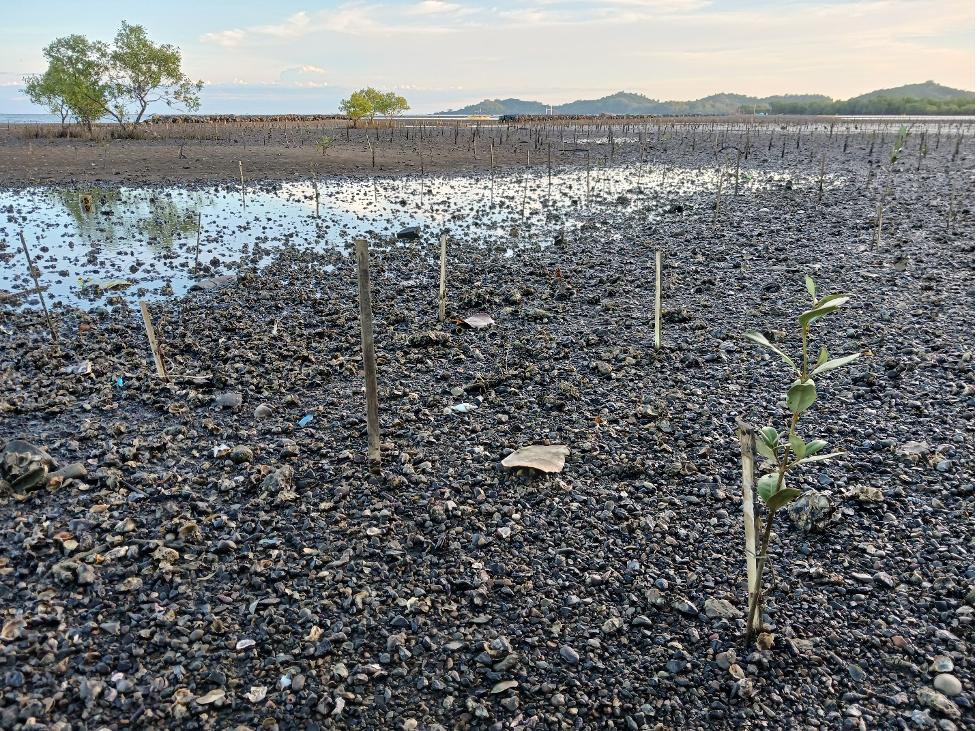
Mangrove planting project – many saplings do not grow well or are washed away
| Coastal climate-related initiatives that could be on a ‘menu’ of conditions to be fulfilled | |||
| Fishing | Alternative livelihoods | Grey-green solutions | Energy |
| Sustainable fishing practices | Salt-tolerant crops | T-shaped breakwater fences | Green vessel fuels |
| Artificial reefs | Floating crops | Cultivating wetlands | Solar dryers |
| Organic aquaculture | Low-carbon tourism | Mangrove utilization | Improved ovens |
| Citizens’ coastal guards | Gender equality | Harvesting rainwater | Tidal energy |
| Artisanal fish processing | Environmental education | Flood prevention | Micro-wind energy |
| Sources: GIZ, Thong Anh Tran, Andriesse, GCF, GCF 2 | |||
Implementing a climate focused CCT program
Such ambitious schemes are only possible in areas where there is sufficient capacity for implementation and monitoring, as also stated in the 2014 brief by the Center for International Forestry Research.
Obviously, one of the main challenges is to get such initiatives financed. However, if international stakeholders step up their game, much could be achieved. Recently the United Nations outlined six critical climate finance actions. Among these are to “make good on the $100 billion annual promise to developing countries for climate action” and to “reform the World Bank and other development banks to make them fit-for-purpose”. Similarly, The President of the African Development Bank, Dr. Akinwumi Adesina, has argued that the “global financial architecture needs to decisively tackle climate change.” And thinking more outside the box, future revenues from climate taxes for frequent fliers, oil tankers, and container vessels could be used to reduce the plight of specific groups. There is a great deal of untapped potential when it comes to climate finance.
Not all CCT initiatives may turn out to be effective. But without more experimentation, vulnerable coastal communities will not witness rapid improvements.
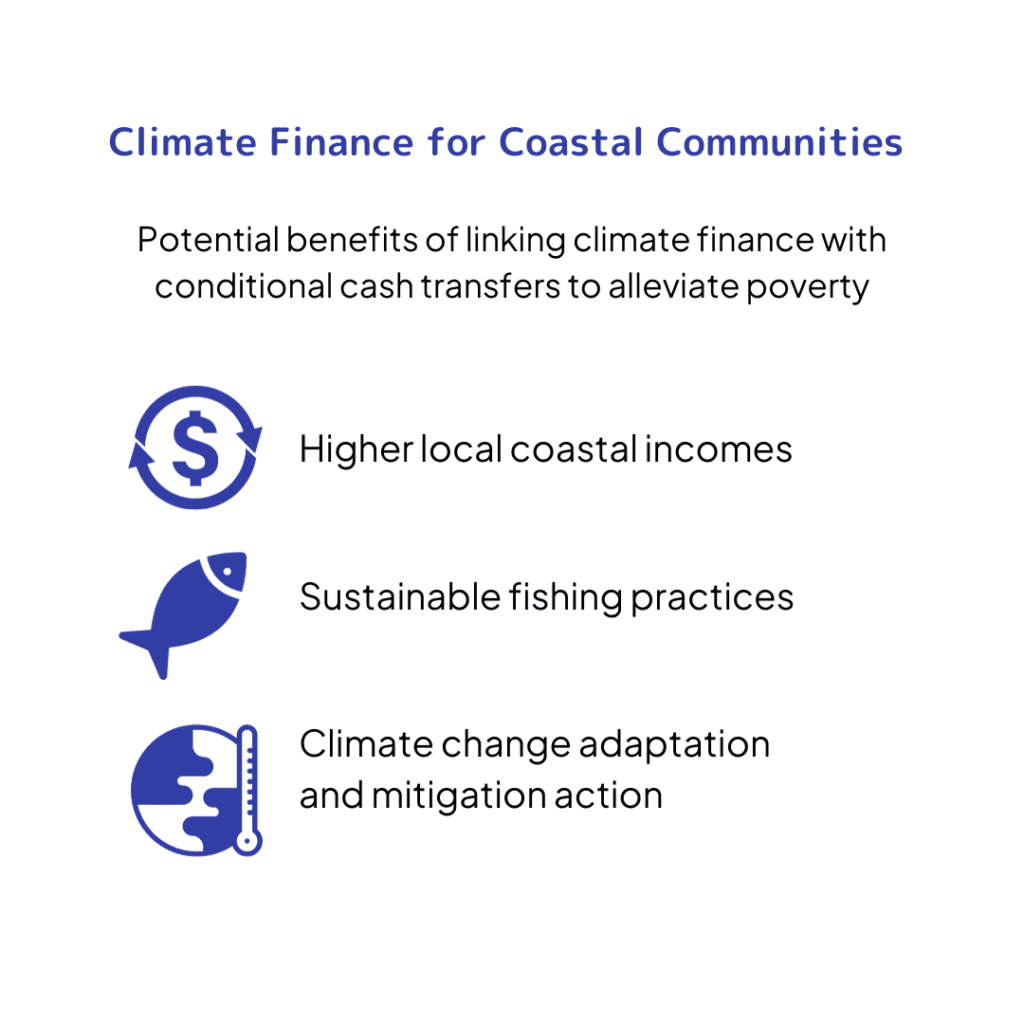
Fieldwork photos Iloilo Province, the Philippines, April 2023
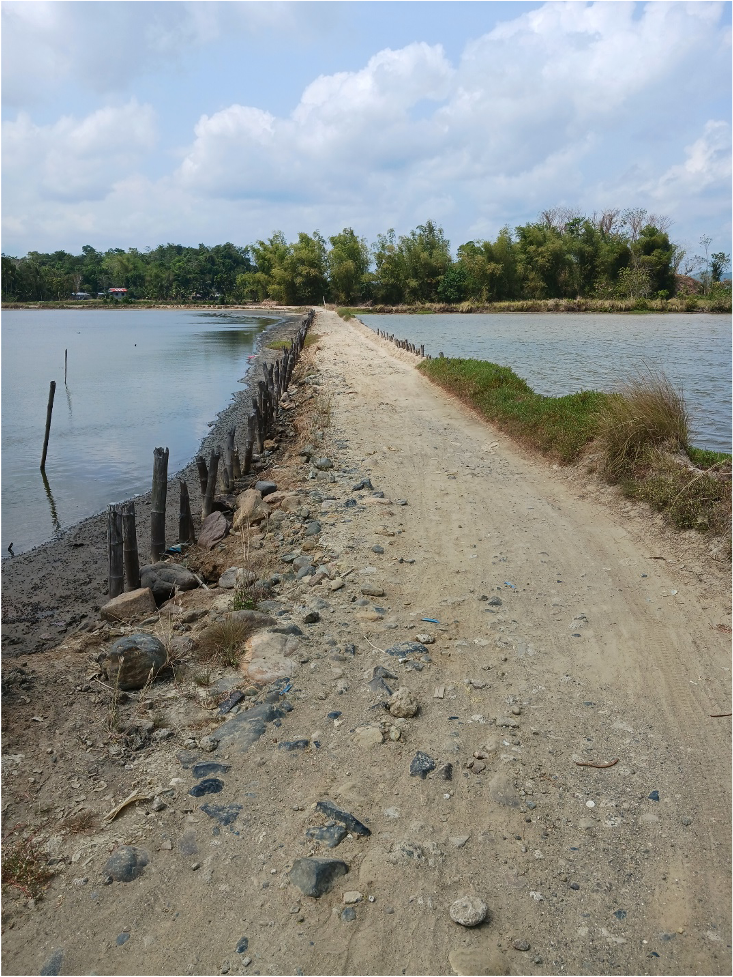
An access road to a coastal community – during the rainy season this road is slippery and dangerous

Color coding to combat illegal fishing with each municipality having a different color
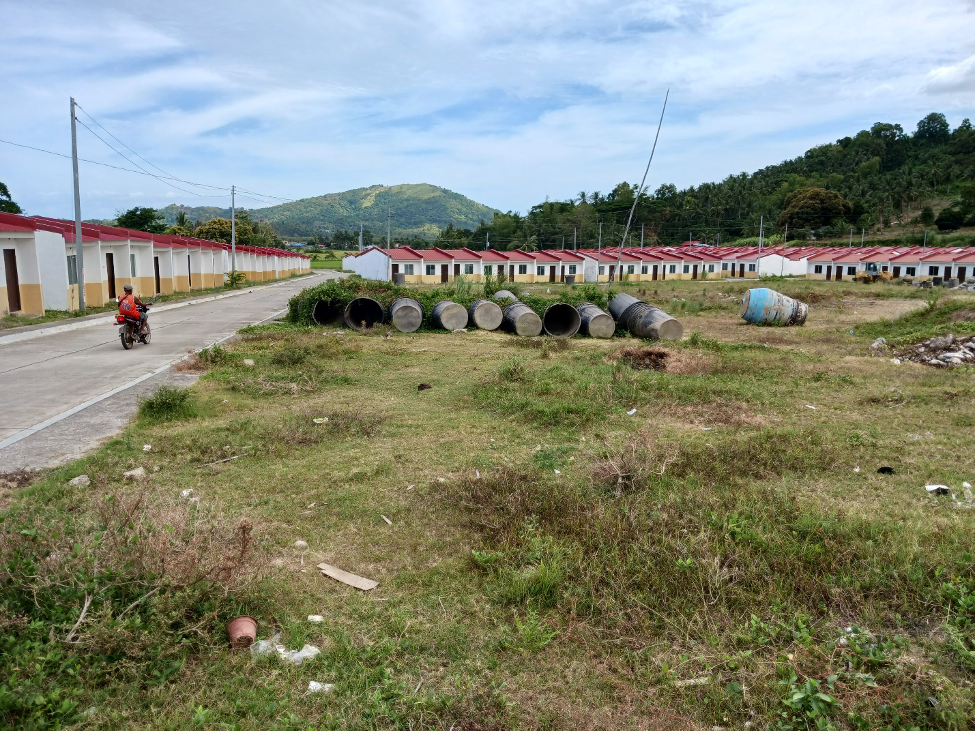
Housing for coastal communities, yet most households prefer to continue living at the shoreline
This article is part of a series organized in partnership with the United Nations University Institute for Environment and Human Security, the Munich Climate Insurance Initiative (MCII) and LUCCC/START.




